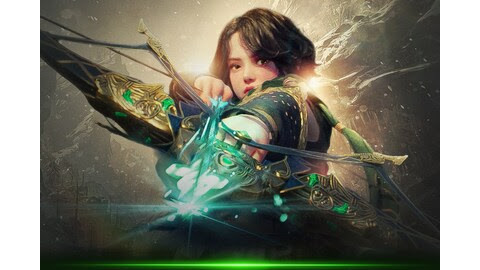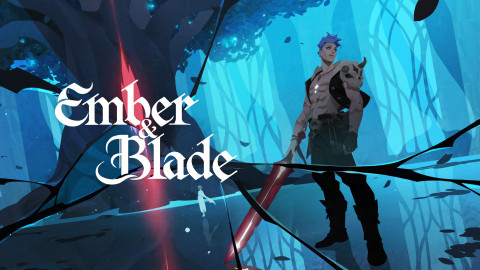
This weekend, I finally completed the campaign for Halo Wars 2, Microsoft’s latest real-time-strategy spinoff. Set shortly after the events of Halo 5: Guardians, Halo Wars 2 is an entertaining ride from start to finish, with a hefty level of challenge for those, like me, who are more familiar with the first-person shooters that made the series famous. It has many of the franchise’s key elements on display, including armies of Grunts ready to blow themselves to smithereens with plasma grenades and Scorpion tanks capable of decimating enemy troops. Yet, the entire game still feels a little aimless. It’s a problem that has been plaguing Halo’s single-player campaigns for several years, and Microsoft must be willing to admit its mistakes and commit to a more focused story if it wants to avoid having the next Halo game throw the series off the rails completely.
Story spoilers for the Halo series to follow!
To understand how meandering the Halo series has become in recent years, we have to first examine the original game. Halo: Combat Evolved told a complete story, layered with equal parts excitement and mystery, but it also gave a sign of what was to come for the next two games.
Set on the eponymous Halo ring world, the original game is a simple tale of survival. The Master Chief’s mission might be to defeat the Covenant and eventually find a way to protect humanity from the massive Flood scourge, but the game’s plot largely focuses on our protagonist simply trying to avoid death. Whether it comes from aliens, zombified marines, or the collapse of Halo itself, the central theme of survival is on full display from beginning to end. As a result, no missions feel like they were added to pad the game’s length, and players are able to easily remain invested in the Master Chief’s journey, in part because of sidekick Cortana’s continued narration. As the game reaches its climax, we are left with two plotlines, both the Covenant war and the Flood, that are unresolved, but the Chief’s daring escape still ultimately delivers a satisfying ending.

Halo 2 builds on the survival theme of the original game, but it adds a theme of its own: protection. With the Covenant arriving on Earth and the planet on the verge of total annihilation, we see humanity come together for a massive last stand that sees them throwing every weapon they have at the invading forces, including – in the famous opening level – the Covenant’s own bomb. Now, Master Chief must think about not just his own survival, but the fate of every other person on Earth and throughout the galaxy. With the addition of the Arbiter to give more background into the inner workings of the Covenant and the hesitance of many of its members to engage in war at all, we see that the “protection” theme also applies to the aliens. Unwilling to engage in what is essentially a suicide mission, they must defend themselves against enemies on both sides.
Though Halo 3 sees the body count multiply exponentially and villains face vengeful deaths at the hands of our heroes, the game’s central theme is ultimately one of forgiveness. Finally able to put aside their differences after discovering the true enemies manipulating pawns from behind the scenes, the game acts as a beautiful bow on a remarkable tale. Though it certainly wasn’t a definite conclusion for the series, 343 Industries’ narrative progression in the games that followed Halo 3 hasn’t managed to justify its necessity, with themes and important story threads seemingly abandoned as the studio instead opts for “bigger is better” at every possible turn.

This is best demonstrated in Halo 5: Guardians, a game that promised to deliver a more personal, emotional tale that focused on the Master Chief’s struggle between his friends and his mission, and would presumably give us more background on the Forerunners’ army first seen in Halo 4. This was a plot thread that needed answers, as the conclusion of the previous game saw much of humanity decimated by a civilization long thought to have been extinct. Instead of building on this conflict and attempting to answer some of our most urgent questions – including how humanity plans to defend itself from such an advanced threat – Halo 5 largely ignores them and instead offers a new array of plotlines that must also be resolved. Cortana’s continued descent into rampancy and apparent dictatorial epiphany, the “Guardians’” true purpose, and the Master Chief’s conflict with other members of the military are now left hanging in addition to the issues brought up in Halo 4.
This is all made more confusing by the sudden resurgence of the Covenant as a significant threat, with very little explanation given for a group of aliens to once again attack humanity. Halo Wars 2 didn’t help matters, as it barely makes an attempt to tie itself in with the ongoing events of the main series, instead telling a side-story that feels superfluous and lacks a resolution in its own right. Its main villain, teased as a legendary warrior and an imminent threat to humanity, is abandoned by the game’s “conclusion,” with no clear understanding for what his place will be within the larger Halo universe.
The Halo universe is rich with lore that 343 Industries clearly wants to examine – from additional alien races to ancient conflicts that set the stage for events thousands of years in the future. But the studio must slow down and examine that plotlines it has already introduced if it ever wishes to get the series back on track. Before attempting us to “wow” us with another alien race or secret superstructure capable of destroying all life in the known universe, it needs to study why the original games were so successful. Telling a straightforward, compelling story with common themes and a constant sense of progression is easier said than done, but it’s the only thing that can keep Halo from becoming obsolete. Each chapter must feel necessary as it clearly works toward an exhilarating and concrete conclusion. This doesn’t mean that Microsoft can’t continue the Halo series with other stories in the future, but if it never plans to address the conflicts and themes it creates in the future, why introduce them at all?

Disclaimer : The following article was written freely based on the author's opinion, and it may not necessarily represent Inven Global's editorial stance.
Sort by:
Comments :0






